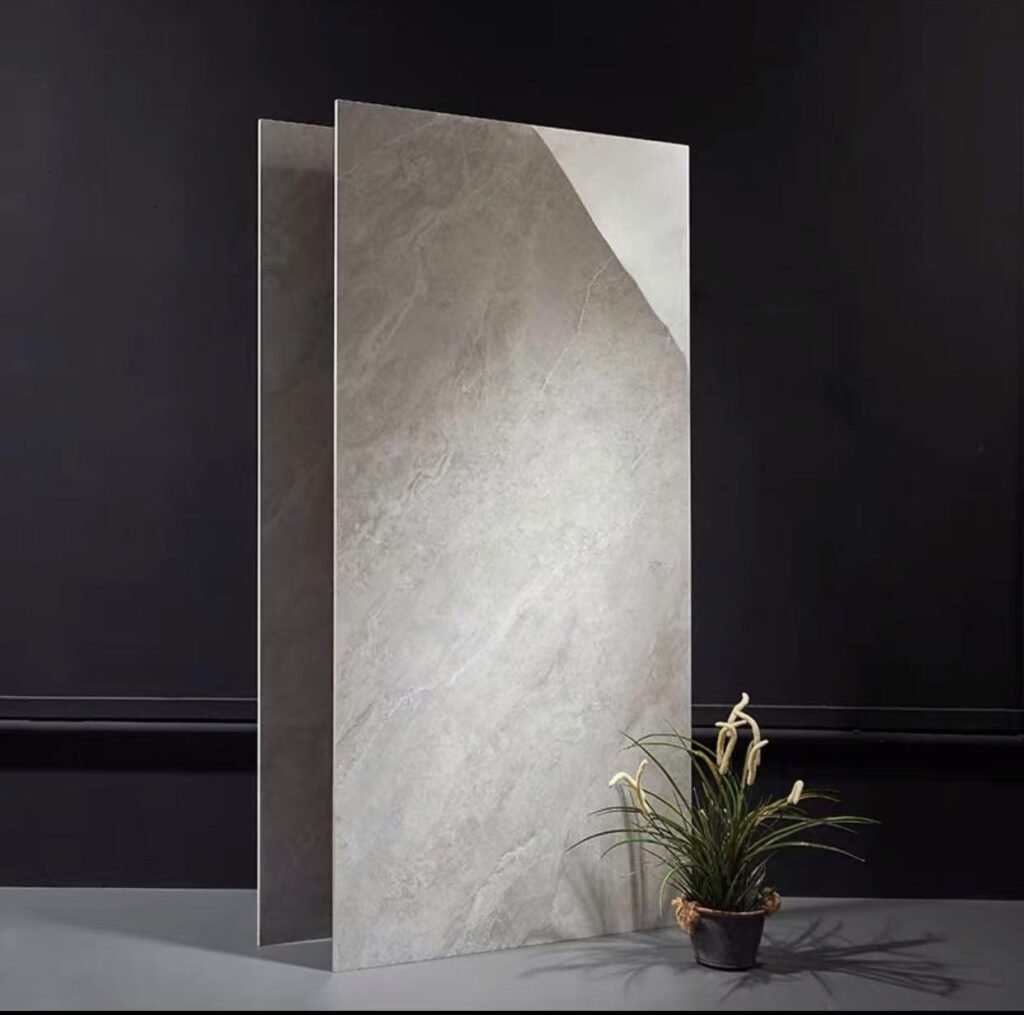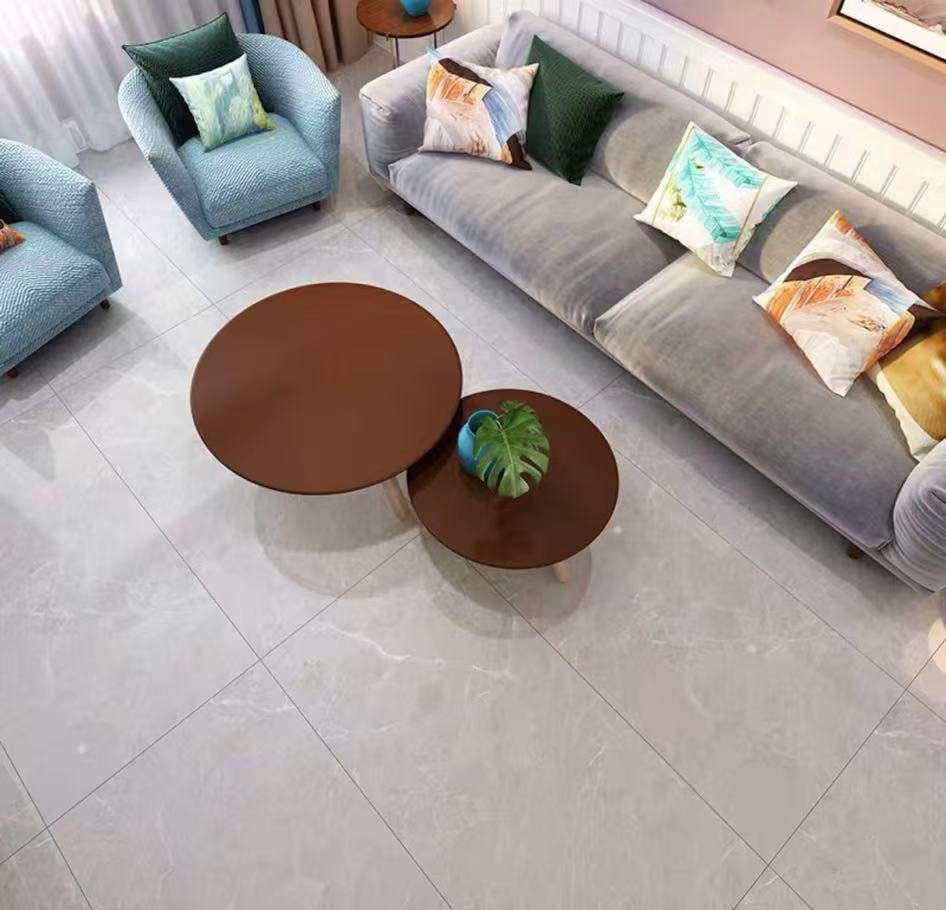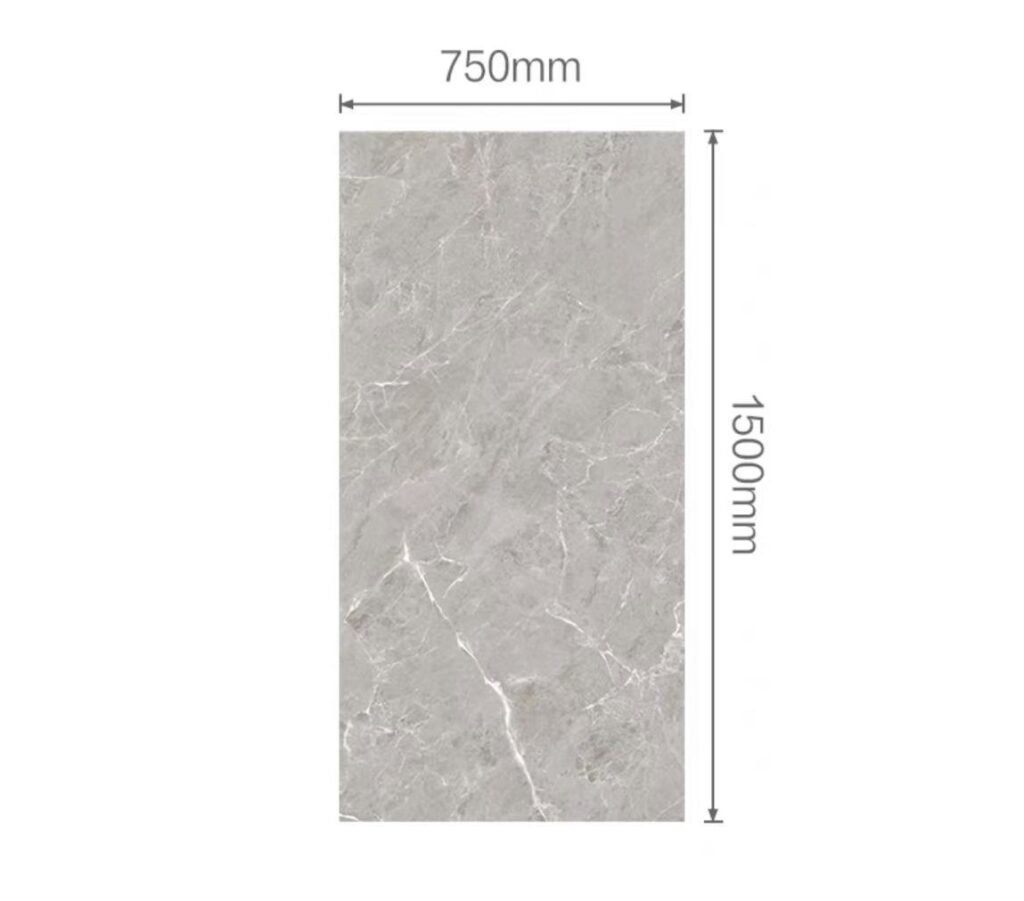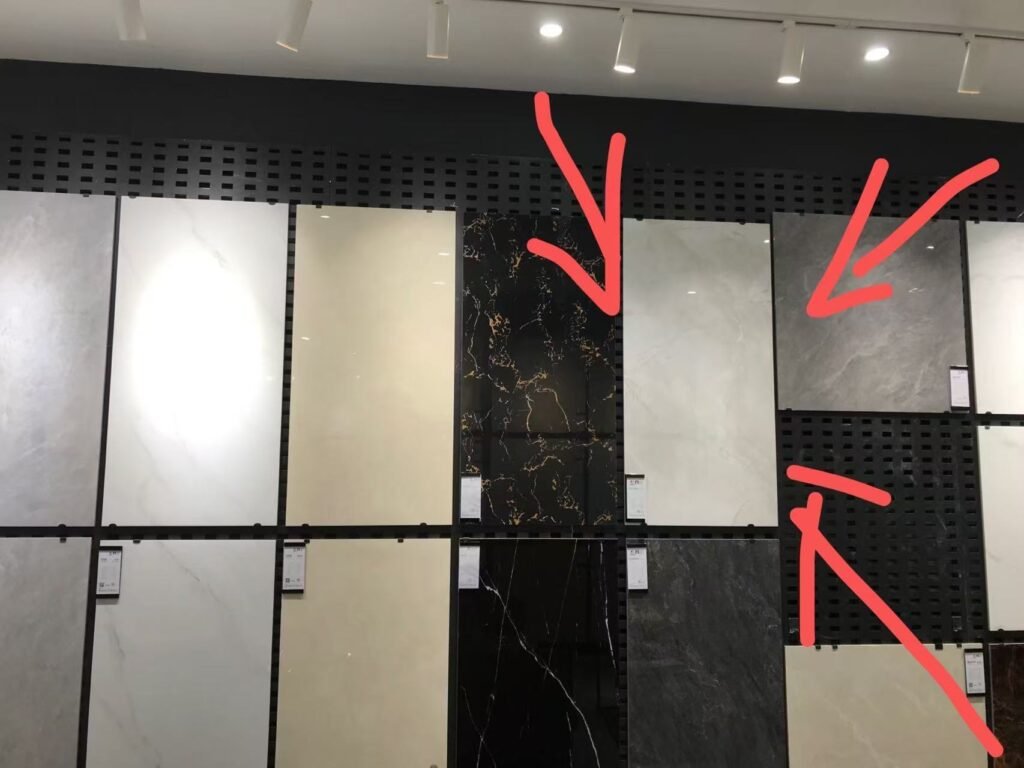Ceramic tiles have been a staple in interior design for centuries, known for their durability, versatility, and timeless appeal. Whether you’re renovating a kitchen, bathroom, or commercial space, ceramic tiles offer both aesthetic beauty and long-lasting functionality. At HiNiDeco, we offer a wide range of high-quality ceramic tiles, designed to meet diverse design preferences and requirements.

Why Choose Ceramic Tiles for Your Home or Business?
- Durability and Longevity
Ceramic tiles are incredibly durable, making them an ideal flooring solution for high-traffic areas. Resistant to wear, moisture, and stains, they maintain their beauty for years, even in busy kitchens or bathrooms. With proper installation and care, ceramic tiles can last for decades without losing their charm. - Easy Maintenance
One of the biggest advantages of ceramic tiles is their low maintenance. They are easy to clean and require minimal upkeep. Simply sweep and mop regularly, and they’ll continue to look brand new. The non-porous surface of ceramic tiles also makes them resistant to stains, mold, and mildew, which is particularly beneficial in areas exposed to water, such as bathrooms and kitchens. - Aesthetic Versatility
Available in a wide variety of designs, sizes, and colors, ceramic tiles can complement any design style—from traditional to modern. Whether you’re looking for classic white subway tiles, colorful mosaics, or marble-effect finishes, HiNiDeco has ceramic tiles to match your vision. Their versatility allows you to create custom patterns and layouts that suit your space’s unique needs. - Eco-Friendly Choice
Ceramic tiles are made from natural materials, including clay, sand, and minerals, making them an environmentally friendly option. They are free from harmful chemicals, and their longevity reduces the need for frequent replacements, making them a sustainable choice in the long run. - Thermal Insulation
Ceramic tiles have natural thermal insulation properties, helping to maintain the temperature of your home or business. They absorb heat in the winter and remain cool in the summer, contributing to energy efficiency and comfort.
Applications of Ceramic Tiles
- Residential Spaces
- Kitchens: Ceramic tiles are perfect for backsplashes, countertops, and floors, offering both functionality and style.
- Bathrooms: The water-resistant nature of ceramic tiles makes them ideal for showers, tub surrounds, and bathroom floors.
- Living Rooms and Hallways: Add elegance and durability to high-traffic areas with ceramic floor tiles.
- Commercial Spaces
- Retail Stores and Showrooms: Create a polished, professional look with high-quality ceramic tiles that can handle heavy foot traffic.
- Offices and Conference Rooms: Elevate your office décor with durable, easy-to-maintain ceramic tiles that also help with noise reduction.
- Restaurants and Hotels: Provide guests with a clean, welcoming environment using stylish and easy-to-clean ceramic tiles.

Difference between Porcelain and Ceramic tiles?
Porcelain and ceramic tiles are both popular options for flooring and wall coverings, but they differ in material composition, manufacturing processes, and performance. Here’s a breakdown of the key differences between porcelain and ceramic tiles:
1. Material Composition
- Ceramic Tiles: Made from a mixture of clay, sand, and other natural materials, ceramic tiles are typically fired at lower temperatures than porcelain. This gives them a softer, more porous structure.
- Porcelain Tiles: Porcelain tiles are a type of ceramic tile, but they are made with finer clay and fired at higher temperatures. This makes them denser, harder, and more durable than regular ceramic tiles.
2. Durability
- Ceramic Tiles: While ceramic tiles are durable and can withstand normal wear and tear, they are not as tough as porcelain. They are more prone to chipping and cracking, especially in high-traffic areas.
- Porcelain Tiles: Porcelain is more durable due to its denser composition. It is resistant to scratches, stains, and moisture, making it ideal for high-traffic areas, bathrooms, and outdoor spaces.
3. Water Absorption
- Ceramic Tiles: Ceramic tiles are more porous, meaning they absorb more water. This makes them less suitable for wet environments like bathrooms or kitchens unless they are properly sealed.
- Porcelain Tiles: Porcelain has a very low water absorption rate, which makes it ideal for wet areas. Its water resistance makes it perfect for use in showers, outdoor spaces, and kitchens.
4. Aesthetic Variety
- Ceramic Tiles: Ceramic tiles are available in a wide range of colors, patterns, and finishes. However, they are typically more limited in terms of texture and design compared to porcelain.
- Porcelain Tiles: Porcelain tiles come in a wider range of designs, including realistic wood, stone, and marble looks. They can be made to mimic high-end materials, making them an excellent choice for luxurious interiors.
5. Weight
- Ceramic Tiles: Ceramic tiles are generally lighter than porcelain tiles, making them easier to handle and install.
- Porcelain Tiles: Due to their denser composition, porcelain tiles are heavier, which can make installation slightly more challenging.
6. Cost
- Ceramic Tiles: Ceramic tiles are typically more affordable than porcelain tiles due to their simpler manufacturing process and material composition.
- Porcelain Tiles: Porcelain tiles are more expensive, as they require more advanced technology and a more time-consuming manufacturing process.
7. Installation
- Ceramic Tiles: Ceramic tiles are easier to cut and install, making them a better choice for DIY projects.
- Porcelain Tiles: Porcelain tiles are harder and more challenging to cut, often requiring specialized tools and professional installation.
8. Maintenance
- Ceramic Tiles: Ceramic tiles are easy to clean and maintain, but they may require sealing to prevent moisture from being absorbed.
- Porcelain Tiles: Due to their low porosity, porcelain tiles are easier to maintain and typically do not require sealing, making them a more maintenance-free option.
How to Clean Ceramic Tiles?
Cleaning ceramic tiles is relatively easy, and with the right methods, you can maintain their shine and extend their lifespan. Here’s a simple guide to help you clean your ceramic tiles effectively:
1. Sweep or Vacuum Regularly
Start by sweeping or vacuuming your ceramic tiles to remove dust, dirt, and debris. This prevents particles from scratching the surface when you clean the tiles. You can use a soft-bristled broom or a vacuum with a hard floor setting to avoid damage.
2. Use a Mild Cleaning Solution
For general cleaning, mix warm water with a mild dish soap or a dedicated tile cleaner. Avoid harsh chemicals, as they can damage the tile surface over time.
- DIY Solution: Mix 1/4 cup of white vinegar with 1 quart of warm water. This is effective for removing grease and stains.
- Store-bought Cleaners: Choose pH-balanced tile cleaners that are safe for ceramic surfaces.
3. Mop the Tiles
Dip a mop into the cleaning solution and wring it out so it’s damp, not soaking wet. Mop the tiles in small sections to avoid leaving excess water on the floor, as standing water can damage grout lines.
- Tip: For floors, use a microfiber mop to avoid streaks and to lift dirt more effectively.
- Tip: For wall tiles, a soft cloth or sponge works well to wipe them down.
4. Scrub Stubborn Spots
For tough stains or sticky spots, use a soft scrub brush or sponge. Apply a bit more cleaning solution directly onto the spot and gently scrub until the stain is gone.
- Tip: For grout stains, use a grout cleaner or a paste made from baking soda and water. Apply it to the grout lines, let it sit for a few minutes, then scrub with a brush.
5. Rinse with Clean Water
After mopping or scrubbing, rinse the tiles with clean water to remove any soap or cleaning solution residue. This will help avoid a sticky buildup that could attract more dirt.
6. Dry the Tiles
Use a soft, clean towel or microfiber cloth to dry the tiles. This helps prevent water spots and streaks, especially on glossy or high-shine finishes.
7. Regular Maintenance
To keep your tiles looking their best, try to clean them at least once a week. For kitchens and bathrooms, it may be necessary to clean more frequently to remove grease, soap scum, or mineral deposits.
Additional Tips
- Avoid Abrasive Tools: Don’t use steel wool, rough sponges, or harsh scrubbers, as they can scratch the surface of the tiles.
- Protect the Tiles: Place rugs or mats in high-traffic areas to reduce dirt buildup and prevent wear.
- Sealing Grout: If your grout lines are unsealed, consider applying a grout sealer to prevent stains and discoloration.

Ceramic Tile Adhesive: A Guide to Choosing and Using the Right Adhesive
When installing ceramic tiles, selecting the right adhesive is crucial to ensure a strong, durable bond that will keep your tiles securely in place. The type of adhesive you use depends on several factors, including the surface you’re applying it to, the location of the installation, and the size and type of tiles. Below is a guide to help you choose and use the right ceramic tile adhesive for your project.
Types of Ceramic Tile Adhesives
- Thin-Set Mortar
- Description: Thin-set mortar is the most commonly used adhesive for ceramic tiles. It is a cement-based material that is applied with a notched trowel to create an even, stable surface for tile installation.
- Best for: Most standard ceramic tile installations, including floors, walls, and backsplashes.
- Advantages:
- Strong bond.
- Versatile for both floor and wall applications.
- Available in pre-mixed or dry powder forms (dry powder requires mixing with water).
- Usage Tips: Use a notched trowel to spread the thin-set and achieve an even layer.
- Mastic Adhesive
- Description: Mastic is a pre-mixed adhesive that is ready to use right out of the container. It is a type of organic adhesive, usually based on latex or acrylic resins.
- Best for: Indoor wall tile applications such as backsplashes and bathroom walls, but not recommended for floor installations or areas exposed to moisture.
- Advantages:
- Easy to use and apply.
- No mixing required.
- Ideal for smaller projects or DIY installations.
- Usage Tips: Mastic should only be used in dry areas because it is not water-resistant.
- Epoxy Adhesive
- Description: Epoxy adhesives are two-component systems that consist of a resin and a hardener. When mixed, they form a very strong and durable bond.
- Best for: High-traffic areas, wet environments like showers, and places exposed to moisture.
- Advantages:
- Extremely strong and resistant to moisture, chemicals, and stains.
- Perfect for commercial and industrial spaces.
- Usage Tips: Epoxy adhesives are best suited for professionals due to their complexity and rapid setting time.
- Rapid-Set Adhesive
- Description: Rapid-set adhesives are specially formulated to set and cure quickly, allowing for faster installation. They are typically a cement-based mix with additives to accelerate curing.
- Best for: Time-sensitive installations where the tiles need to be set quickly.
- Advantages:
- Fast drying.
- Allows for quicker tile installation.
- Ideal for busy environments where the floor or surface must be usable shortly after installation.
- Usage Tips: Be mindful of the working time since these adhesives set rapidly.
How to Apply Ceramic Tile Adhesive
- Prepare the Surface
Ensure the surface where you’ll apply the adhesive is clean, dry, and smooth. If you’re tiling over an old surface, make sure to remove any loose paint, wallpaper, or debris. - Mix the Adhesive (If Applicable)
If you’re using dry powder mortar, follow the manufacturer’s instructions to mix the adhesive with water. Make sure to get a smooth, lump-free consistency. For mastic or pre-mixed adhesives, skip this step. - Apply the Adhesive
- For Thin-Set Mortar: Use a notched trowel to spread the adhesive over the surface. Hold the trowel at a 45-degree angle to create even ridges in the adhesive layer.
- For Mastic: Spread the mastic using a trowel, creating an even, thin layer across the surface.
- Set the Tiles
Press each tile firmly into the adhesive, twisting slightly to ensure it adheres properly. Use tile spacers to maintain even gaps between the tiles for grout. - Let the Adhesive Set
Allow the adhesive to set according to the manufacturer’s instructions (usually 24-48 hours), depending on the type of adhesive used. Avoid walking on the tiles or disturbing them during the curing process. - Grouting
After the adhesive has set, apply grout to fill the spaces between the tiles. Wipe away excess grout with a damp sponge, and let it cure.
Factors to Consider When Choosing Tile Adhesive
- Location: Choose a waterproof adhesive for wet areas like bathrooms, kitchens, and outdoors.
- Tile Size: Larger tiles may require a stronger adhesive or specific mortar with thicker consistency.
- Type of Tile: Some tiles, like natural stone, may require specific adhesives to avoid staining or damage.
- Surface: Make sure the adhesive is compatible with the surface you’re tiling over, whether it’s drywall, concrete, or plywood.

Are ceramic tiles waterproof?
Ceramic tiles are water-resistant, not completely waterproof. The tiles themselves have a non-porous surface, which prevents them from absorbing water directly. However, the grout used between the tiles is porous and can absorb water if not properly sealed. Over time, water can seep into the grout lines and the underlying substrate, leading to potential damage.
Key Considerations:
- Tile Surface: Ceramic tiles resist water, making them ideal for wet areas like bathrooms and kitchens.
- Grout: The grout between tiles is not waterproof unless sealed. Water can seep through unsealed grout and cause issues like mold or mildew.
- Sealing: To ensure complete water resistance, it’s important to seal the grout lines properly, especially in areas that experience constant moisture, like showers and floors.
Ceramic tiles brands worldwide?
Here are some of the most popular and trusted ceramic tile brands known for their high quality, variety of designs, and innovative products:
1. Mohawk Industries
- Overview: One of the largest manufacturers of flooring products in North America, Mohawk offers a wide range of ceramic tiles, including porcelain and ceramic options for various residential and commercial applications.
- Key Features: Durable, stylish, and eco-friendly.
2. Daltile
- Overview: A leading brand in the tile industry, Daltile offers an extensive collection of ceramic tiles in various styles, colors, and sizes.
- Key Features: High-quality, versatile, and available in multiple finishes like matte, glossy, and textured.
3. American Olean
- Overview: Known for their stunning designs and affordable pricing, American Olean provides a range of ceramic tiles for residential and commercial projects.
- Key Features: Contemporary designs, durability, and wide selection of patterns.
4. Marazzi
- Overview: A global leader in ceramic and porcelain tile manufacturing, Marazzi offers a wide selection of tiles in different shapes, colors, and finishes.
- Key Features: Elegant designs, innovative textures, and eco-friendly options.
5. Porcelanosa
- Overview: A high-end brand that combines cutting-edge technology with sophisticated designs. Porcelanosa is known for its luxury ceramic tiles and top-tier craftsmanship.
- Key Features: Modern aesthetics, premium quality, and stylish finishes.
6. Atlas Concorde
- Overview: A premium brand offering a large variety of ceramic tiles, including both modern and traditional styles. Atlas Concorde is known for its high-quality products and innovative designs.
- Key Features: Luxury finishes, precision craftsmanship, and exceptional durability.
7. Roca
- Overview: With a global presence, Roca offers ceramic tiles that are perfect for modern, minimalist, and contemporary interiors.
- Key Features: Cutting-edge design, eco-friendly manufacturing, and versatile styles.
8. Crossville
- Overview: Based in the U.S., Crossville offers sustainable ceramic tile options with unique and vibrant designs. They are a go-to brand for those looking for both durability and eco-conscious solutions.
- Key Features: Environmentally friendly, contemporary designs, and premium quality.
9. Bedrosians
- Overview: A California-based tile company, Bedrosians offers high-end ceramic tiles in a variety of styles and finishes. They are known for their elegant and refined aesthetic.
- Key Features: Luxury design, wide range of textures, and eco-friendly options.
10. Florida Tile
- Overview: Florida Tile offers high-quality ceramic tiles for residential and commercial applications. Their collections include traditional and contemporary styles in a variety of colors and sizes.
- Key Features: Excellent durability, diverse styles, and high performance.
How to Choose the Right Ceramic Tile Brand
- Style & Design: Depending on your design preferences, some brands specialize in contemporary styles, while others may offer more traditional options.
- Quality & Durability: Look for brands known for their durable, scratch-resistant, and moisture-resistant ceramic tiles.
- Price Range: Some brands offer premium, luxury tiles, while others provide budget-friendly options with great quality.
- Eco-Friendliness: Many brands now offer tiles made with environmentally friendly materials and sustainable practices.
China famous Ceramic Tiles?
China is home to several well-known ceramic tile manufacturers that are recognized globally for their high-quality products, innovation, and wide selection of designs. Here are some of the famous ceramic tile brands from China:
1. Foshan (China) Ceramic Tiles
- Overview: Foshan, a city in Guangdong Province, is the hub of ceramic tile manufacturing in China. Many top Chinese tile manufacturers are based here, offering high-quality ceramic, porcelain, and stoneware tiles.
- Popular Brands:
- KITO
- LUXURY
- Royal
2. Marco Polo
- Overview: Marco Polo is one of the most prestigious ceramic tile brands in China. Known for its luxury collections, the brand offers a wide variety of porcelain and ceramic tiles with innovative designs and advanced manufacturing technology.
- Key Features: High-end, modern designs, premium quality, and a global reputation.
3. Hanse
- Overview: Hanse is a well-established Chinese ceramic tile manufacturer that specializes in producing tiles suitable for both residential and commercial projects. They offer a wide selection of floor and wall tiles in various styles and finishes.
- Key Features: Budget-friendly options, variety in design, and reliable quality.
4. Dongpeng
- Overview: Dongpeng is one of China’s largest and most well-known ceramic tile manufacturers. They offer a wide range of ceramic and porcelain tiles, including products for both interior and exterior applications.
- Key Features: Durable, eco-friendly, and high-tech manufacturing. Dongpeng is well-known for its large-format tiles.
5. Simpolo
- Overview: Simpolo is another Chinese tile manufacturer recognized for its quality and innovative designs. The brand offers a broad selection of tiles, including ceramic and porcelain products.
- Key Features: Trendsetting designs, durable finishes, and variety in texture and patterns.
- 6. Bristile
- Overview: A well-known Chinese brand, Bristile manufactures high-quality ceramic tiles with a reputation for fine craftsmanship. Their tiles are available in a wide range of styles and sizes for different applications.
- Key Features: Premium-quality ceramic and porcelain tiles, superior surface finishes, and advanced technology.
- 7. Guanzhou Yingli
- Overview: This brand is popular in China and internationally for producing ceramic tiles that are both functional and stylish. Guanzhou Yingli focuses on offering innovative designs and durable materials.
- Key Features: Innovative designs, modern styles, and good price-performance ratio.
- 8. Cinca
- Overview: Cinca is a major Chinese tile manufacturer with a focus on high-end designs and a wide variety of tile formats. Their products are used in both residential and commercial spaces.
- Key Features: Luxury finishes, versatility, and high durability.
9. Jiaxing Jiapu
- Overview: Jiapu is a reputable ceramic tile brand in China that specializes in producing eco-friendly and durable ceramic tiles. They offer a diverse range of products for different styles and applications.
- Key Features: Eco-friendly materials, long-lasting performance, and attractive designs.
10. GANI
- Overview: GANI is a luxury brand in China known for producing premium ceramic and porcelain tiles. The brand is known for its cutting-edge technology and elegant designs that cater to high-end markets.
- Key Features: High-end designs, superior quality, and large-format tiles.
Why China is a Leading Producer of Ceramic Tiles
- Technology and Innovation: Chinese manufacturers invest heavily in modern production techniques, creating tiles that are not only high-quality but also feature innovative designs and advanced technology.
- Large-Scale Production: With vast manufacturing capacity, China is able to supply large quantities of tiles to both local and international markets, making it a dominant force in the ceramic tile industry.
- Affordability: Chinese ceramic tiles are often more affordable than those from European or North American manufacturers, offering great value for money without compromising on quality.
How to Choose the Right Chinese Ceramic Tile Brand
- Quality: Ensure that the brand you choose offers durable, non-porous tiles with excellent water resistance and scratch resistance.
- Design & Variety: Look for a brand that offers a wide range of designs, finishes, and sizes to suit your specific needs and preferences.
- Price Range: Chinese ceramic tiles are available at various price points, from budget-friendly to luxury options, so choose a brand that fits your budget.
- Reputation: Opt for well-established brands with positive reviews to ensure you get a product that meets high standards.
A ceramic tile cutter is a tool specifically designed to cut ceramic tiles with precision. There are different types of ceramic tile cutters, each suited for different levels of expertise and project sizes. Here are some of the most common types and features:
Types of Ceramic Tile Cutters:
- Manual Tile Cutters (Handheld)
- Overview: Manual tile cutters are simple, hand-operated tools that score the surface of the tile and then snap it along the score line. They are ideal for small to medium-sized tiling projects.
- Key Features:
- Cost-effective.
- Easy to use.
- Suitable for straight cuts.
- Limited to smaller tile sizes.
- Best For: DIY enthusiasts and smaller tiling projects.
- Electric Tile Cutters (Wet or Dry)
- Overview: Electric tile cutters use a motor to power a diamond blade that slices through the tile. Wet cutters use water to cool the blade and reduce dust, while dry cutters operate without water.
- Key Features:
- Suitable for all tile types, including porcelain and ceramic.
- Provides cleaner, more precise cuts.
- Can handle larger tile sizes and complex cuts.
- Best For: Professional use or large-scale projects.
- Angle Grinders
- Overview: An angle grinder with a diamond blade is often used for making curved or intricate cuts in ceramic tiles. It is versatile but requires a steady hand and attention to safety.
- Key Features:
- Ideal for cutting curves and irregular shapes.
- Suitable for tougher tiles like porcelain.
- Portable and powerful.
- Best For: Experienced users and irregular or decorative cuts.
- Tile Nippers
- Overview: Tile nippers are manual tools used for cutting small pieces of ceramic tiles, often for trimming the edges or making small, intricate cuts.
- Key Features:
- Perfect for small adjustments and detailed cuts.
- Easy to handle.
- Ideal for making small or irregular cuts.
- Best For: Precise, small cuts and trimming tile edges.
- Tile Snaps (Snap Cutters)
- Overview: Tile snap cutters use a lever and scoring wheel to cut tiles. They are commonly used for cutting standard ceramic and porcelain tiles.
- Key Features:
- Quick and efficient for straight cuts.
- Low maintenance.
- Less dust compared to electric cutters.
- Best For: Straight cuts in medium-sized ceramic tiles.
How to Choose the Best Ceramic Tile Cutter:
- Project Size: For large projects, an electric wet tile cutter might be the best option. For small or medium projects, a manual tile cutter or tile snap cutter is sufficient.
- Type of Tile: Harder tiles (like porcelain) may require a more powerful tool, such as an electric cutter or angle grinder.
- Precision: If you need clean, precise cuts, consider investing in a high-quality electric tile cutter or a wet tile cutter with a diamond blade.
- Ease of Use: If you are a DIYer, manual cutters or tile nippers are more user-friendly, while electric cutters require more experience.
Tips for Using a Ceramic Tile Cutter:
- Measure Twice, Cut Once: Always measure and mark your tiles carefully before cutting to ensure accuracy.
- Use Proper Safety Gear: For electric cutters and angle grinders, always wear safety goggles, gloves, and a dust mask.
- Cut Tiles in Small Sections: If you’re using a manual cutter, apply even pressure and cut the tiles in small sections to avoid cracking.
- Use a Wet Cutter for Porcelain Tiles: Wet cutters help reduce heat buildup and prevent cracking in harder materials like porcelain tiles.
Ceramic tiles glue
Ceramic tile adhesive, also known as tile glue or thin-set mortar, is a type of cement-based substance used for adhering ceramic tiles to surfaces such as floors, walls, and countertops. It comes in different types, each suitable for specific tile installation needs. Here’s what you need to know about ceramic tile glue:
Types of Ceramic Tile Glue:
- Thin-set Mortar: This is the most common type of tile adhesive. It is cement-based, and often available in both dry powder and ready-mix forms. It’s great for most indoor tile installations, such as floors, walls, and showers.
- Mastic: This adhesive is a pre-mixed, ready-to-use product. It is suitable for wall tiles and interior use but is not recommended for wet areas or floors.
- Epoxy Adhesive: Epoxy-based adhesives offer strong bond strength and resistance to moisture, chemicals, and extreme temperatures. They are ideal for areas exposed to heavy wear or where high performance is needed.
- Polymer-Modified Thin-set: This type of adhesive is modified with polymers for better flexibility, adhesion, and water resistance. It is often used for larger tiles or installations in areas with higher moisture levels.
Features of Good Ceramic Tile Glue:
- Strong Bond: Provides a secure bond between the tile and surface, preventing tiles from shifting or lifting.
- Water Resistance: Especially important for areas like bathrooms and kitchens.
- Flexibility: Ensures tiles stay in place despite slight movements or settling in the building structure.
- Quick Drying: Most adhesives set quickly, allowing for faster tile installation.
How to Choose the Right Ceramic Tile Glue:
- Location: If you are installing tiles in high-moisture areas (e.g., bathrooms or kitchens), opt for an adhesive with water resistance.
- Tile Size: Larger tiles may require a stronger adhesive or a polymer-modified thin-set to support the additional weight.
- Surface Type: Make sure to choose the adhesive designed for the specific surface you’re tiling, whether it’s drywall, cement backer board, or plywood.
Tips for Application:
- Surface Preparation: Clean the surface thoroughly, removing dust, grease, and debris.
- Mixing: Follow the manufacturer’s instructions for mixing, especially for powdered adhesives.
- Application: Spread the adhesive evenly with a notched trowel, ensuring a uniform coat for a strong bond.
- Tile Placement: Press tiles firmly into place, twisting slightly to ensure good contact with the adhesive.
- Curing: Allow the adhesive to cure fully before grouting and walking on the tiles.
Ceramic tiles exhibition 2025 globel
In 2025, several prominent ceramic tile exhibitions are scheduled globally, offering industry professionals and enthusiasts opportunities to explore the latest trends, technologies, and products in the ceramic tile sector. Here are some notable events:
Coverings 2025
Dates: April 29 – May 2, 2025
Location: Orlando, Florida, USA
Overview: Coverings is the largest and most significant ceramic tile and natural stone conference and exhibition in North America. It features a comprehensive conference program focusing on Health & Wellness, Sustainability, Outdoor Spaces, and Timeless Luxury.
Ceramics Expo 2025
Dates: April 29 – 30, 2025
Location: Novi, Michigan, USA
Overview: Ceramics Expo connects suppliers, buyers, engineers, and industry leaders from high-tech applications, providing a platform for building lasting relationships and gaining insights into the latest trends in advanced ceramics and glass manufacturing.
Cersaie 2025
Dates: September 22 – 26, 2025
Location: Bologna, Italy
Overview: Cersaie is the International Exhibition of Ceramic Tile and Bathroom Furnishings, presenting the evolving relationship between architecture and everyday life. The event showcases a dynamic dialogue that adapts and transforms over time, reflecting global dynamics and cultural exchanges.
UNICERA 2025
Dates: November 3 – 7, 2025
Location: Istanbul, Turkey
Overview: UNICERA Istanbul is a world-leading exhibition in the ceramics, bathroom, and kitchen sectors, bringing together industry professionals and innovative designers to explore the latest products and trends.
Ceramic Expo Bangladesh 2025
Dates: November 27 – 30, 2025
Location: Dhaka, Bangladesh
Overview: CERAMIC EXPO Bangladesh is an international exhibition on the global ceramic industry, held in Bangladesh, offering a platform for industry professionals to connect and explore new opportunities.




